What exactly is RedCap?

With the freezing of the 3GPP R17 version, a new term has gradually become popular, that is, RedCap. What exactly is RedCap? Why introduce it? How is it different from the current 5G?
Let's take a look at Xiaozaojun's in-depth analysis...
What is RedCap
RedCap, the full name is Reduced Capability, Chinese means "reduce ability". It is a new technology standard specially established by 3GPP in the 5G R17 stage.
For the name RedCap, you may feel relatively unfamiliar. In fact, its previous name, which some readers may have heard of, is NR light (NR lite).
To put it bluntly, RedCap is a lightweight 5G.
It is worth mentioning that some domestic articles describe the full name of RedCap as Reduced Capacity. This is obviously wrong, Capacity means capacity, Capability is ability.
Why RedCap
5G is doing well, why make a lightweight version? The reasons are as follows:
As we all know, 5G is divided into three major application scenarios, namely eMBB (enhanced mobile broadband), uRLLC (low latency and high reliability communication), and mMTC (mass Internet of things communication).
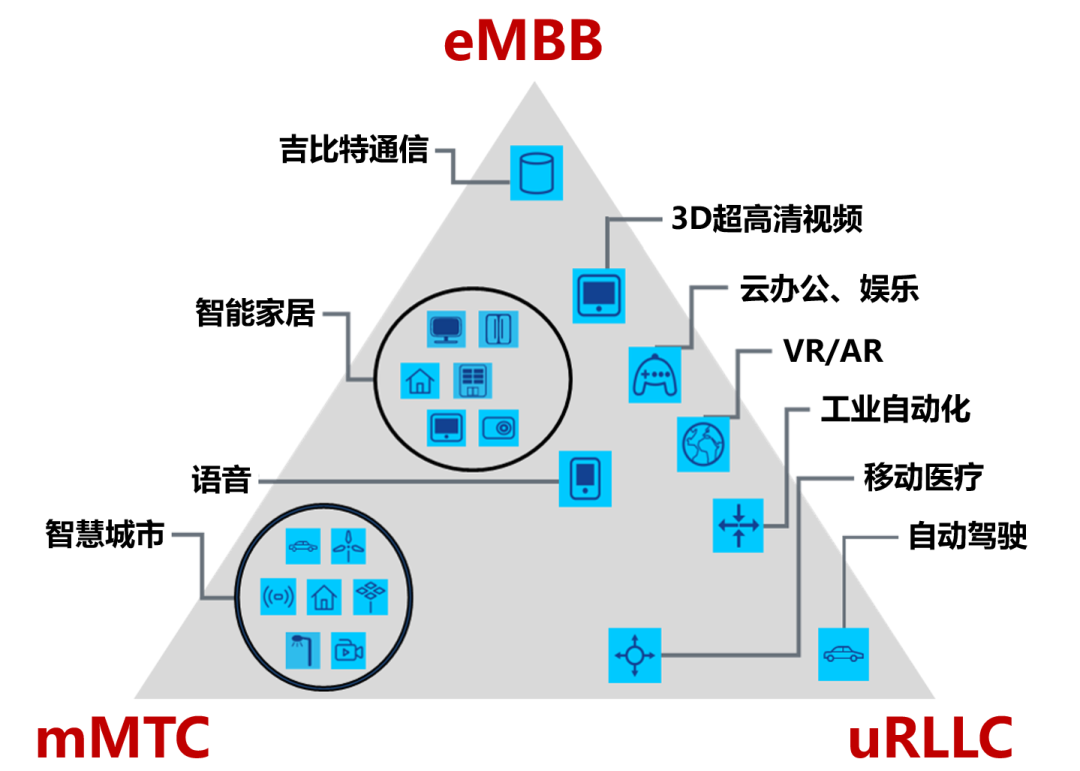
eMBB is an upgrade of MBB (Mobile Broadband) in the 4G era, mainly focusing on network speed, bandwidth capacity, spectrum efficiency and other indicators. At present, the 5G mobile communication we use belongs to the eMBB scenario.
For uRLLC and mMTC, the former focuses on reliability and delay, while the latter focuses on the number of connections and energy consumption. Both are mainly serving the industry Internet, including industrial manufacturing, Internet of Vehicles, remote meter reading and other vertical industries.
As I told you before, the application scenarios of the Internet of Things are extremely complex and diverse. Different scenarios have different requirements for network indicators.
Taking speed as an example, high-speed connection is required for VR/AR and high-definition broadcasting, but for remote meter reading (water meter, electricity meter), and data synchronization of shared bicycles, only low speed is required. Compared with speed, many application scenarios are more concerned with power consumption and cost.
After so many years of development, the Internet of Things has formed three categories: high-speed, medium-speed and low-speed:
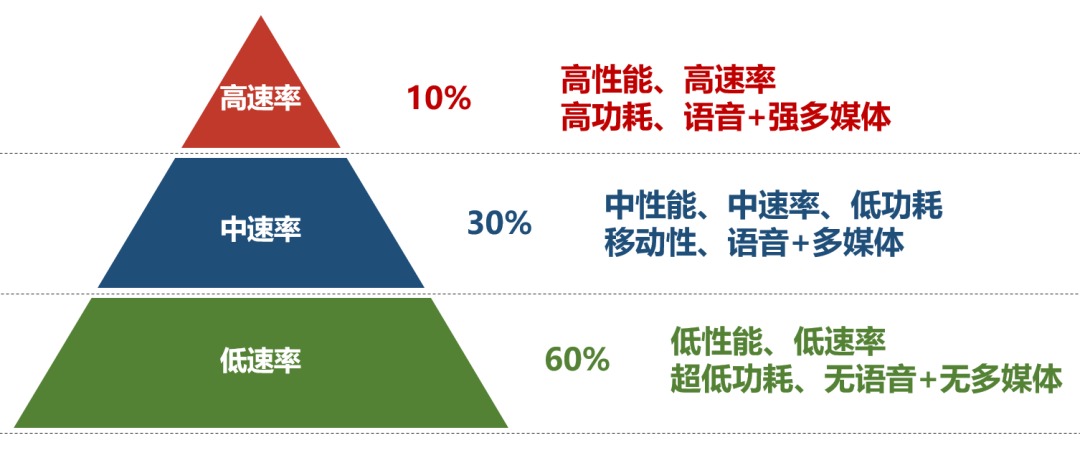
"631" structure
If you count the increasingly popular passive IoT (ultra-low speed), there are four categories:
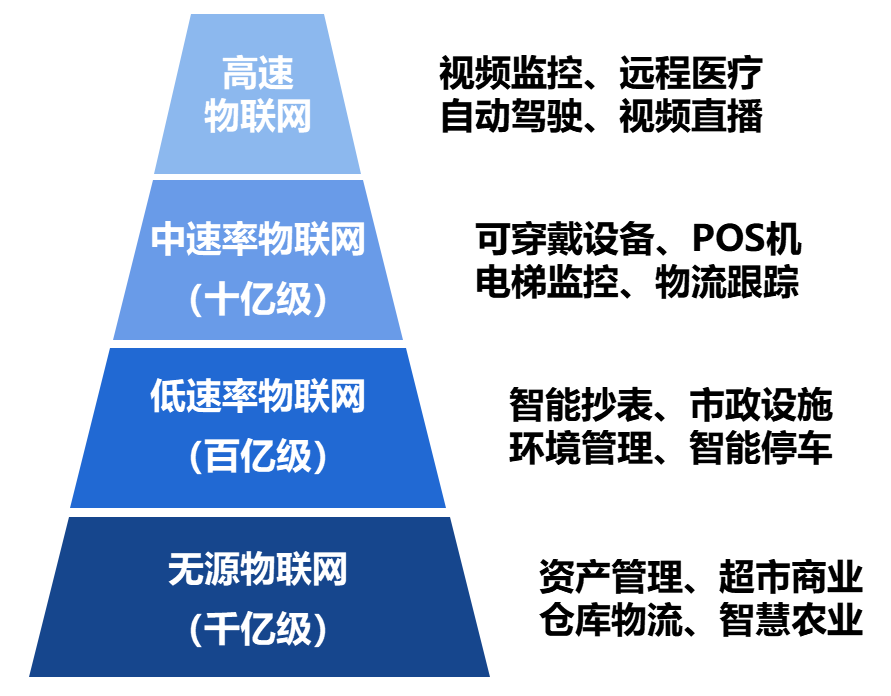
5G alone cannot meet all needs. Therefore, at this stage, 5G and 4G are carrying together. Even 2G, 3G are helping.
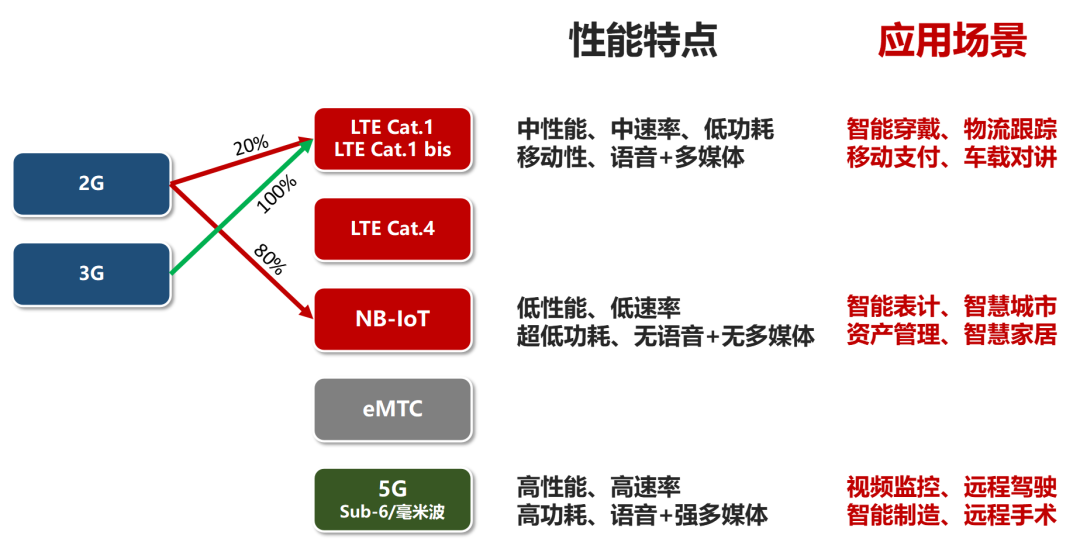
With the withdrawal of 2G and 3G networks, most of the 2G and 3G IoT services will migrate to LTE Cat.1, LTE Cat.4 and NB-IoT. That is, 4G and 5G dominate the world. So the question is, what should I do if 4G will be withdrawn from the network in the future? Or, when a new operator is established, is it necessary to build a 4G network in addition to 5G? Therefore, 5G must consider the long-term and build a lightweight version to cover the current LTE Cat.1 and Cat.4 requirements, that is, medium-speed and medium-high-speed requirements.
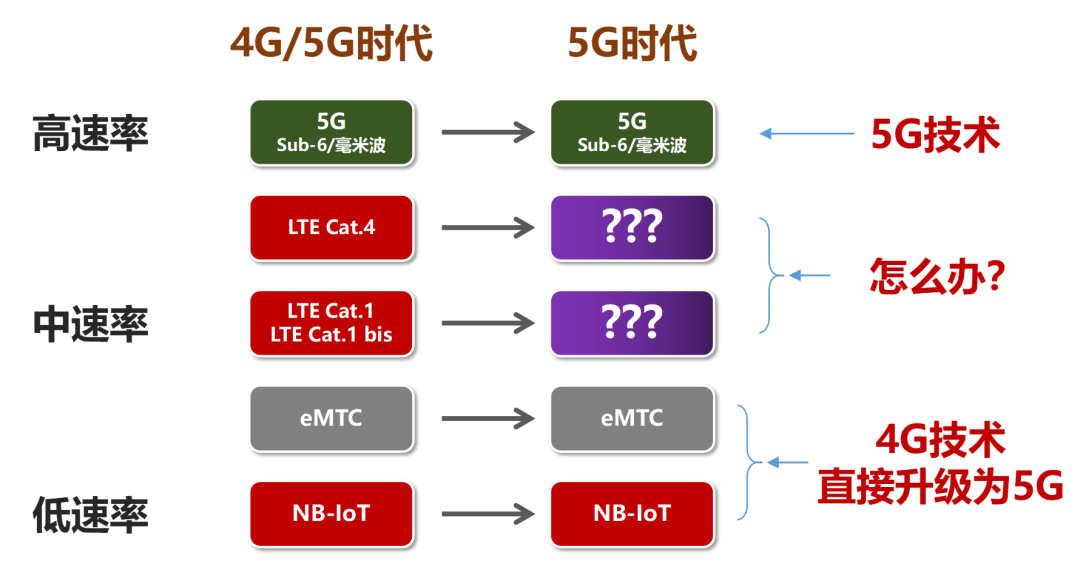
Thus, there is RedCap.

In other words, NB-IoT/eMTC is a castrated version of 4G. And RedCap is a castrated version of 5G.
In terms of technical characteristics, RedCap is between eMBB (ultra-wideband) and LPWA (low power wide area network, NB-IoT, etc.).

RedCap is mainly aimed at applications where bandwidth, power consumption, cost and other requirements are based on eMBB and LPWA.
Its bandwidth rate is lower than eMBB, but much higher than LPWA. Its power consumption and cost are higher than LPWA, but far lower than eMBB.
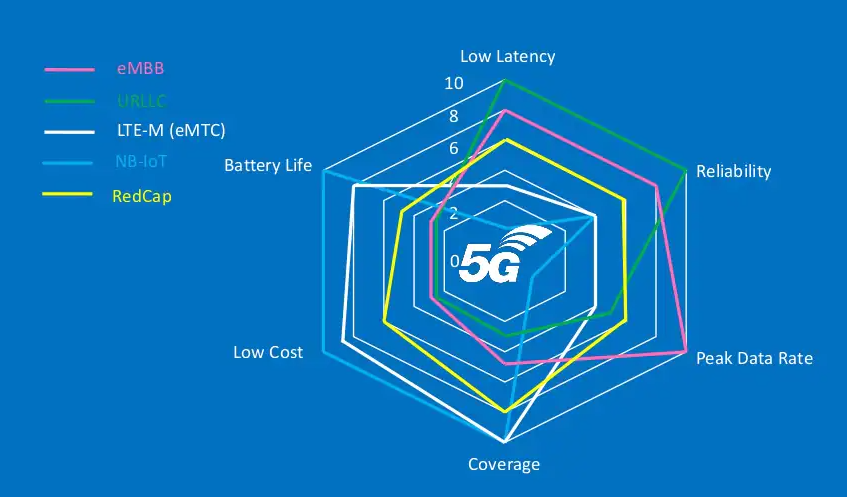
The capabilities of RedCap are very "balanced" (yellow line is RedCap). Another driving force for the birth of RedCap is the cost of 5G terminal chips and modules.
The full version of 5G terminal chips and modules have extremely complex designs, extremely high R&D thresholds, and huge investment costs. Their prices have also remained high (500-1000 yuan).
The high price has affected the implementation of 5G in vertical industries, and users are reluctant to spend so much money.
Therefore, building a lightweight 5G is also to reduce the cost of 5G deployment and use in some scenarios where the speed and delay requirements are not so high, to better serve users, and to accelerate the implementation of 5G.
How does RedCap achieve low cost?
Coming to the key part of this article, how exactly RedCap was castrated and Reduced.
The table below shows the main differences between 5G RedCap devices and 5G legacy devices.
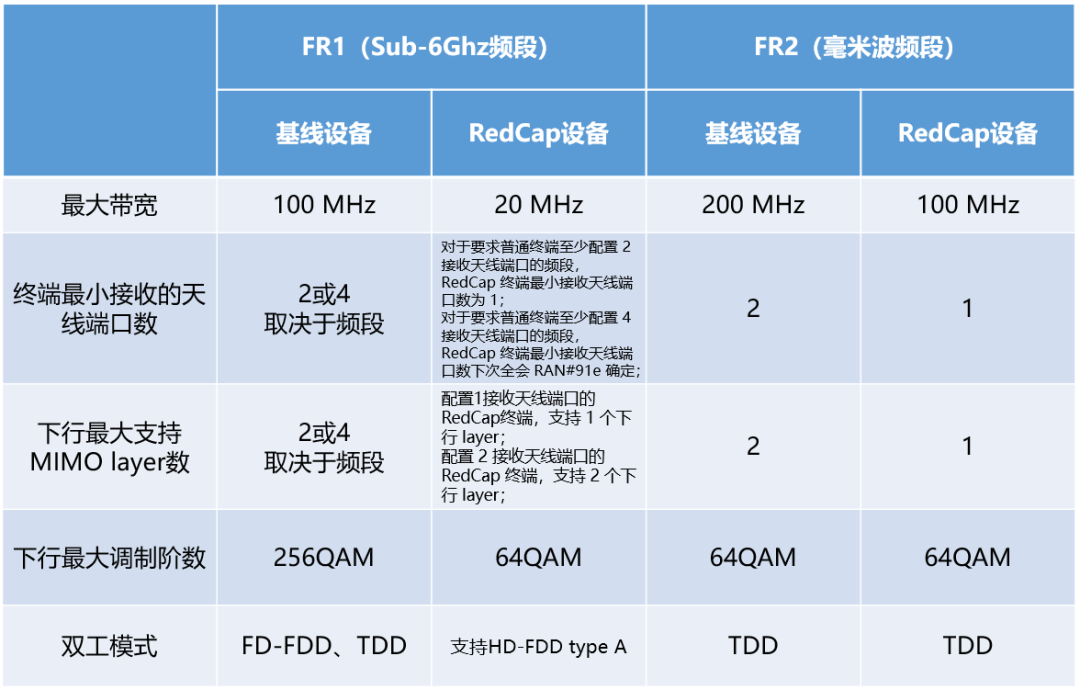
The original image comes from Ericsson (translated by Xianzao Classroom)
First, RedCap has a smaller spectral bandwidth. In the Sub-6GHz band, the bandwidth of RedCap is 20MHz, which is less than 100MHz of traditional 5G.
Second, RedCap reduces the number of transmit and receive antennas and reduces the number of MIMO layers. For the Sub-6GHz frequency band, the receive chain of the RedCap terminal can be reduced to one or two, and the corresponding downlink MIMO can be reduced to one or two layers of reception. In this way, the capability requirements for the terminal radio frequency transceiver and baseband processing module are reduced.
Third, RedCap uses a simpler modulation method such as 64QAM, which also means that the requirements for radio frequency and baseband are greatly reduced.
Fourth, RedCap adopts half-duplex FDD (HD-FDD), which can transmit and receive on different frequencies at different times without requiring a duplexer. It not only saves costs, but also obtains better integration capabilities (duplexers are generally larger), reduces the occupation of equipment space, and is conducive to the miniaturization of equipment.
Fifth, RedCap has introduced some power-saving measures, such as enhanced discontinuous reception (eDRX) and a longer sleep mode, allowing the terminal to reduce power consumption and obtain higher battery life.
Based on the above changes, according to predictions, compared to 5G public network terminals, RedCap reduces the complexity by 60%, and reduces the cost by about 70% on the baseband and radio frequency side. It is even said that the overall cost of RedCap can be reduced by 2-5 times, or even 7-8 times.
Although the RedCap has been heavily castrated, the basic performance is still preserved. It can be introduced based on the smooth upgrade of the existing 5G network, and does not require major transformation of the existing network.
Say good, say bad. What did RedCap lose?
The first is speed. With the decrease of terminal bandwidth, simplification of MIMO reception, and the decrease of the highest modulation order, the peak rate of RedCap will also decrease significantly.
The specific rate value varies according to the number of antennas and frame structure. Please refer to the following table:
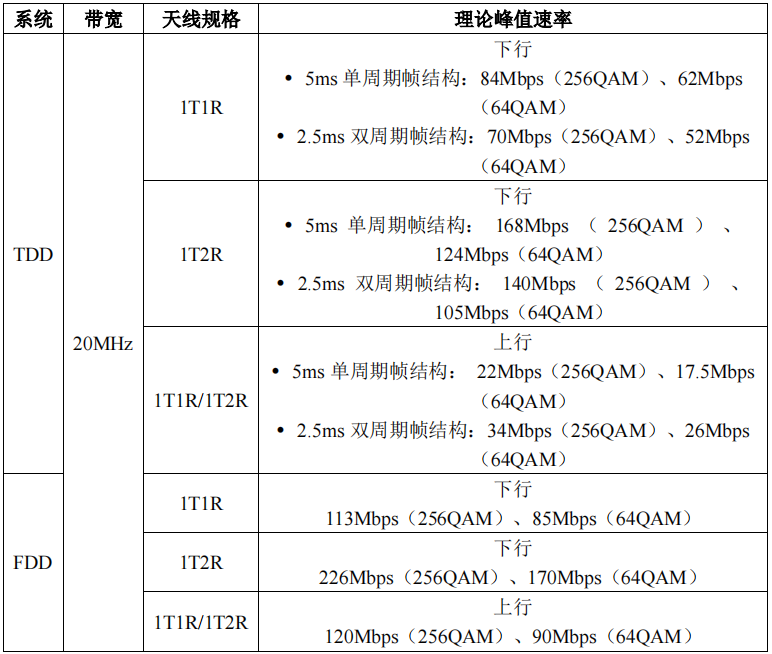
RedCap uplink and downlink peak rate reference (from 5G RedCap technical white paper)
In terms of coverage capability, due to the shrinkage of antenna design and the size limitation of wearable terminals, the coverage capability has shrunk slightly.
In terms of transmission delay, HD-FDD cannot send and receive at the same time, and the transmission delay will increase. However, for RedCap's application scenarios, none of these issues have much impact.
It is worth mentioning that, considering the application scenario and cost, 3GPP proposes that RedCap can only work in one frequency band at a time, and does not need to support carrier aggregation or dual connectivity. (Of course, the early RedCap terminals must be dual-mode, after all, the coverage of 5G is not perfect.)
Almost forgot to mention the price. According to the forecast, the price of RedCap's modules will be controlled between 100-200 yuan (RMB), which is much lower than the current 5G modules of several hundred yuan, but higher than the NB-IoT modules of tens of yuan.
Typical business scenarios of RedCap
At present, according to the standard definition of 3GPP R17, RedCap supports three major business scenarios, namely: wearable devices, industrial sensors and video surveillance.
The specific network requirements of these three scenarios are shown in the following table:
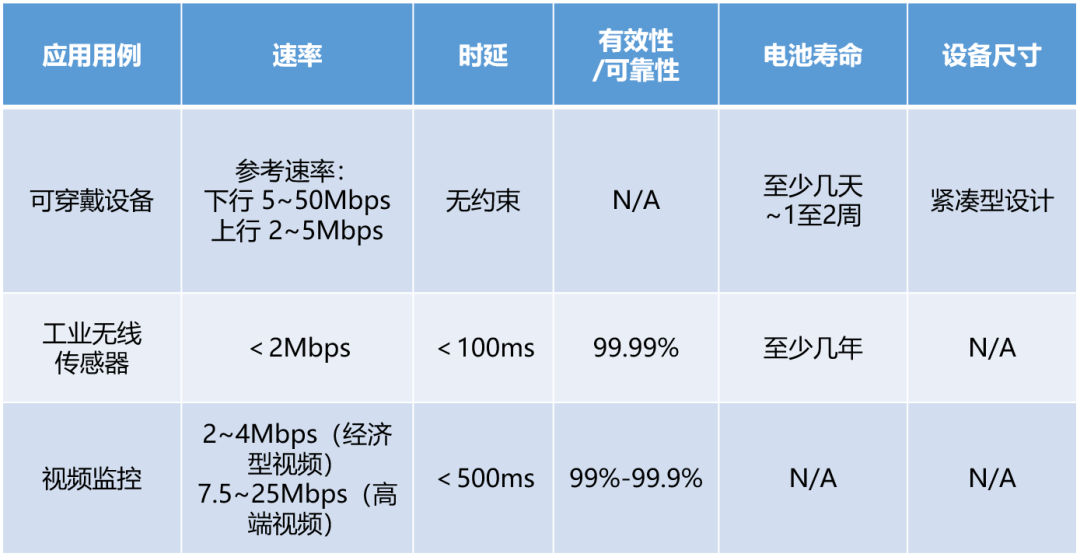
The original image comes from Ericsson (translated by Xianzao Classroom)
Wearable devices, such as smart watches.
At present, the mainstream smartwatches on the market only support 4G and do not support 5G. Because the cost of 5G chips is too high, the heat generation is large, and the high speed of eMBB is a bit redundant for the screen size of the watch.
Using RedCap, it can fully meet the video calling needs of smart watches, not only the downlink bandwidth is sufficient, but the uplink bandwidth is also much higher than LTE Cat.1.
In addition, RedCap can also meet the needs of smart watches in terms of size and power consumption.
Look again at industrial sensors.
You may be unfamiliar with industrial wireless sensors. There are many categories of this thing, including pressure sensors, humidity sensors, motion sensors, thermometers, accelerometers, drives, and more.
These sensors are widely used in the industrial field, and the number is huge. It requires slightly higher reliability, about 99.99%. However, the latency requirement is not too high, within 100ms. The speed is generally not more than 2Mbps.
There's no question that RedCap is content.
Finally, there is video surveillance.
Video surveillance is a widespread IoT requirement, and it is everywhere around us.
Many people believe that 5G is needed for video surveillance. In fact, video surveillance is also divided into various categories. Some are 4K/8K UHD, high-end surveillance (7.5-25 Mbps). There are also HD or SD, which are economical monitoring (2-4 Mbps).
In practical applications, the proportion of economical video surveillance is larger. These do not require 5G, and LTE Cat.1/Cat.4 and our RedCap are sufficient.
In addition to the above three scenarios, RedCap can be applied in many places, such as smart logistics, smart power, smart inspection, and smart manufacturing.
According to the forecast data of major market consulting agencies, by 2025, the terminal scale of domestic wearable, video surveillance and power industries can reach the order of tens of millions. For RedCap, the market is promising.
When will RedCap be commercially available?
In June 2019, at the 3GPP RAN #84 conference, RedCap was first presented as an R17 Study Item.
In March 2021, 3GPP officially approved the NR RedCap UE standardization (ie Work Item) project.
Now, on June 9, 2022, 3GPP R17 is frozen, which means that the standardization of RedCap R17 is completed.
According to experience, after standardization, it will take at least 1-2 years to achieve initial industrialization. So, by mid-2023 (or early 2024), we expect to see an early commercialization of RedCap.
Note that the standardization of RedCap is not completely over. In December 2021, the standardization of 3GPP R18 RedCap has already started.

3GPP RedCap standardization work process (from 5G RedCap technical white paper)
The goal of R18 RedCap is to align with Cat.1/1bis to further reduce the complexity of the terminal and achieve the ultimate simplification of the RedCap terminal complexity. In other words, the technology of RedCap still has a long way to go in the future.
Well, that's all for RedCap. Thank you for your patience, see you next time!